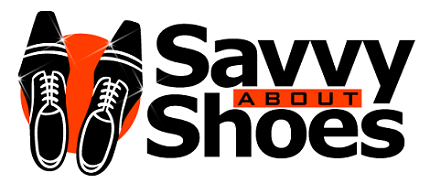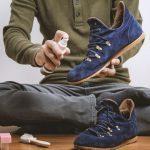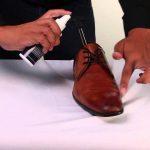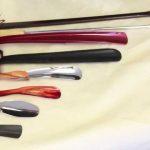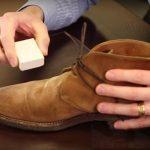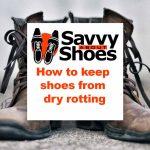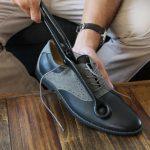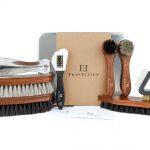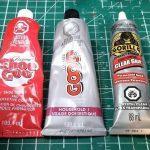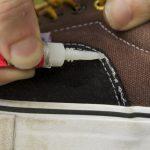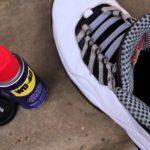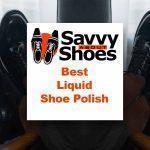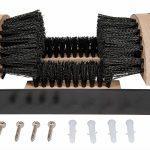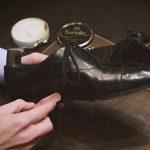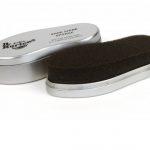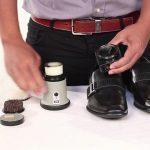You can keep shoes from dry rotting by storing them properly. It’s the first step to keep shoes from dry rotting or getting Moldy. Discover how to protect your leather shoes from dry rotting. When you store wet shoes you help the rotting process. store your shoes dry and clean and absorb excess moisture with shoe trees, ensuring your footwear stays in prime condition. Say goodbye to dry rot worries with These five steps will keep your shoes safe from dry rotting:
- Buy good quality shoes
- Store your shoes in a dry environment (avoid plastic boxes)
- Make sure your shoes are dry and clean before storing them
- Use cedar shoe trees to absorb moisture (silica gel or paper s will work as well)
- Wear your shoes often, but preferably not 2 days in a row
- Treat your shoes with shoe care products like shoe conditioners or polishers (once or twice per year)
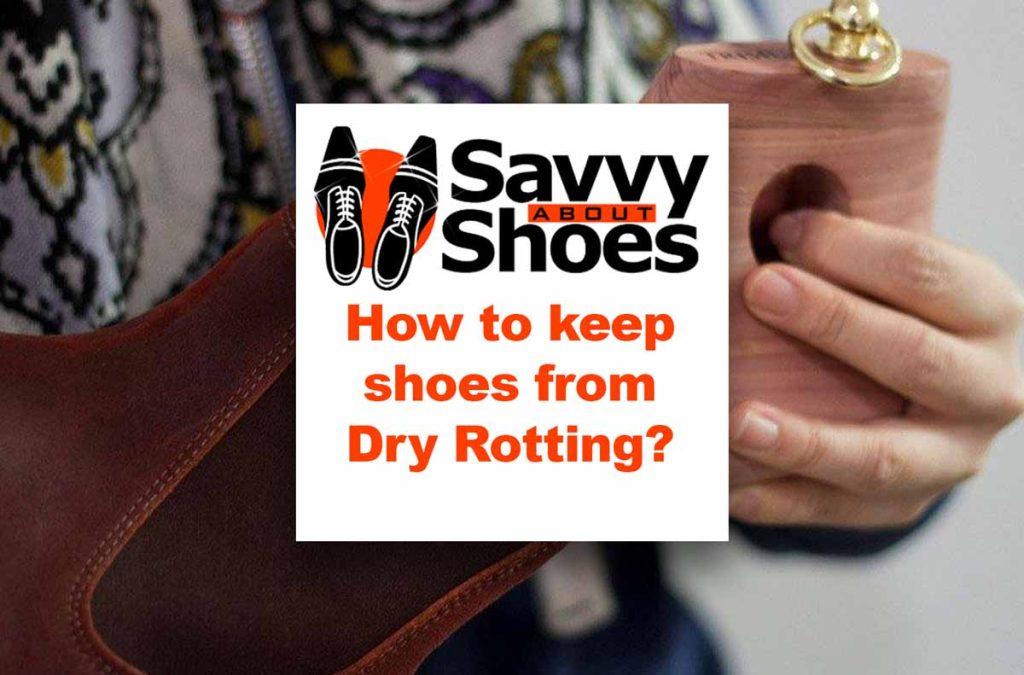
Jump immediately to the faq section of this page
Table of content
- How to prevent your shoes from dry rotting
- What causes shoes to dry rot
- Frequently asked questions
- 10 steps to avoid dry rotting shoes
- Invest in a high-quality pair of shoes
- Shoe storage
- Avoid plastic boxes to store your shoes
- Use shoe trees, desiccants, or newspaper to absorb moisture
- Rotate and condition your shoes regularly
- Effect of dry rotting based on shoe material
- Type of shoes and how to keep them from dry rotting
- Conclusion
If you store your shoes for a long time without wearing them, you risk having them fall apart and break down. The weakest link is the glue which starts yellowing. After that, the soles start crumbling, the rubber breaks down, and the leather starts to dry rot.
Prevent shoes from dry rotting
Dry rotting process starts when too much moisture is inside your shoes for a long period. Your shoes should be exposed to air, and one of the best ways to do so is using a shoe tree. (preferebly cedar) With a plastic shoe tree, you need a few silica gel packs in the shoes to absorb excess moisture. Without a shoe tree, try stuffing your shoes with acid-free paper — it will help the shoe retain its shape and absorb moisture.
Why do shoes dry rot? Understanding Dry Rot in Shoes
Dry rot is a condition that affects various materials, including leather, rubber, and synthetic fabrics. It occurs due to the breakdown of polymers within the shoe material, resulting from exposure to moisture, heat, and UV rays. As a result, the shoe becomes brittle, loses its flexibility, and eventually disintegrates.
Despite its name, dry rotting in shoes has little to do with actual rotting and more with mold damage resulting from too much moisture. The main reason shoes dry rot and break down is because they are stored in a humid environment where mold forms and attacks the leather or the other materials that shoes are made of.
Related: How to glue your outsole to your shoes
How to keep shoes from dry rotting?
The secret to keeping your shoes from dry rotting is storing them properly in a dry environment, using cedar shoe trees, silica pockets or newspapers to absorb extra moisture, and wearing them or treating them with shoe care products at least every couple of years to reinvigorate them.
If you’re planning to store your shoes without wearing them for a long time, here are the 10 simple steps you need to take to prevent your shoes from dry rotting once you buy them.
- Remove Dirt and Debris:
Before cleaning, remove any dirt, dust, or debris from the shoes’ surface. Use a soft brush or clean cloth to wipe away the particles gently. - Choose the Right Cleaner:
Select a suitable cleaner based on the shoe material. Use a leather cleaner for leather shoes, while mild soap or a fabric-specific cleaner works well for fabric shoes. Avoid using harsh chemicals that can damage the material. - Spot Test:
Before applying the cleaner to the entire shoe, perform a spot test on a small, inconspicuous area to ensure it doesn’t cause discoloration or damage. - Clean the Shoes:
Dip a soft clean cloth or brush into the cleaning solution and gently scrub the shoes’ surface. Pay attention to any stains or soiled areas. Be patient and avoid scrubbing too vigorously for tough stains, as it may damage the material. - Rinse or Wipe:
Depending on the type of cleaner used, rinse the shoes with water or wipe off the cleaning solution using a damp cloth. Ensure all traces of the cleaner are removed. - Dry Thoroughly:
After cleaning, allow the shoes to air dry naturally at room temperature. Avoid direct heat sources like hair dryers, as excessive heat can lead to dry rotting. - Condition Leather Shoes:
If you clean leather shoes, apply a leather conditioner or shoe creams to moisturize and nourish the leather. Conditioning helps prevent the leather from drying out and cracking, reducing the risk of dry rot. - Store Properly:
Once the shoes are completely dry, store them in a cool, dry place with good ventilation. Use shoe trees, newspapers or crumpled acid-free tissue paper inside the shoes to maintain their shape and absorb excess moisture. - Rotate Shoes:
Avoid wearing the same pair of shoes every day. Allow them to rest and air out between wears. This helps prevent sweat and moisture buildup, which can contribute to dry rotting. - Protect from Sunlight:
Avoid leaving shoes exposed to direct sunlight for extended periods. UV rays can break down shoe materials, leading to dry rot. Store shoes away from windows or use curtains to block sunlight when necessary.
1. Invest in a high-quality pair of shoes
We can talk about how to store your shoes properly and in a perfect environment all day, but if your shoes are made from low-quality materials, they will not stand the test of time, even if you don’t wear them. High-quality shoes, made from real leather or premium materials, have clear advantages over synthetic shoes for dry rotting. Leather shoes have a natural ability to let air flow, which helps prevent moisture buildup. This is crucial because excess moisture is a big reason shoes can dry rot. So, good quality leather shoes are less likely to suffer from dry rot than synthetic shoes.
Synthetic material, fake leather and rubber deteriorate much faster than real leather or suede. Soles from low-quality materials crumble much faster, and glue deteriorates faster than proper stitching. If you plan to store your shoes for a couple of years and only wear them occasionally, you can’t cut corners regarding quality.
2. Store them in a controlled, dry environment
Shoes must be stored away from extreme heat or cold and not exposed directly to sunlight. Keep them in a dry environment without high room humidity or sources of moisture. A room closet is an ideal choice to store them. The laundry room in the basement? Not so much.
A sealed bag is helpful when storing sneakers that have already started falling apart. (explained in the video below)
3. Don’t store your shoes in a plastic shoe box
Shoe boxes (made of plastic or cardboard) are terrible for storing your pairs of shoes long-term and can enable dry rotting. They prevent natural air circulation and are the perfect environment for moisture build-up and mold. Use a shoe rack or an open shelf to keep shoes from dry rotting.
4. Use shoe trees, desiccants, or newspaper to absorb moisture
Cedar shoe trees are the best option to store your shoes long-term and prevent dry rotting. The cedar absorbs moisture and has anti-bacterial and deodorant properties. Not only will you keep the mold away and any bugs that may attack your shoes, your shoes will also smell nice. Since shoe trees last forever and are quite cheap, investing in cedar shoe trees might be the smartest investment you can make for your shoe care.
If you don’t have access to shoe trees, you can use desiccants to keep the moisture out. Silica gels are sold in tubs or packets and can be placed in the closet to absorb moisture.

If you’re on a budget, stuffing your pair of shoes with newspaper will keep their shape and absorb some of the surrounding moisture, keeping shoes from dry rotting as well. (less effective than shoe trees, though)
5. Don’t Wear your shoes daily and condition them twice a year
Shoes are made for wearing, and keeping them in a closet for a long time is detrimental. Wearing your shoes occasionally will expose them to fresh air, and cleaning with soapy water before and after wearing will eliminate the bacteria that start to form inside them.
An even better alternative is to treat your shoes with dedicated shoe care products like shoe conditioners or polishers, even if you’re not wearing them, just for the reinvigorating benefits. Once or twice per year should be enough to prevent any dry rotting.
Related: Waterproof Safety Shoes & Safety Boots: How to keep dry feet !
Keep shoes from dry rotting explained (video)
Effect of Dry Rotting Based on Upper Material
The effect of dry rotting can vary based on the upper material and the type of shoes. Different materials and shoe types can have varying levels of susceptibility to dry rot, and understanding these differences is essential for proper shoe care. Let’s explore this in more detail:
1. Leather Shoes:
Leather shoes are more resistant to dry rot compared to synthetic materials. Genuine leather has natural breathability, allowing air to circulate, which helps prevent moisture buildup inside the shoes. However, if not properly cared for, leather shoes can still be vulnerable to dry rot, especially when exposed to excessive moisture and not regularly conditioned.
2. Synthetic Shoes:
Synthetic shoes, such as those made from materials like PVC or rubber, are more prone to dry rot. These materials often lack breathability, trapping moisture inside the shoes and creating an environment conducive to dry rot. As a result, synthetic shoes may degrade more quickly if not adequately cared for.
3. Fabric Shoes:
Shoes made from fabric materials, like canvas or mesh, fall between leather and synthetic shoes regarding dry rot susceptibility. The breathability and moisture absorption level can vary based on the specific fabric used. Regular cleaning and storage are essential to prevent dry rot in canvas shoes.

Effect of Dry Rotting Based on Shoe Type
1. Athletic Shoes:
Athletic shoes, especially those used for sports and physical activities, are more prone to moisture exposure due to sweating and external factors. This makes them susceptible to dry rot if not appropriately maintained. Cleaning, drying, and rotating athletic shoes after use can help mitigate the risk of dry rot.
2. Dress Shoes:
Dress shoes, often made from leather, are typically well-crafted and have better resistance to dry rot. However, dry rot can still affect them if exposed to excessive moisture or not adequately cared for over time.
3. Casual Shoes:
Casual shoes, including sneakers and loafers, come in various materials, and their susceptibility to dry rot depends on the material used. Leather casual shoes generally fare better in resisting dry rot than synthetic or fabric ones.
4. Boots:
Boots, whether work boots or fashionable boots are often designed to withstand harsh conditions. Proper maintenance of leather or high-quality synthetic boots can resist dry rot better than lower-quality materials.
Related: Can You Wear Leather Boots in the Rain? Can You Use a Shoe Stretcher on Boots?
Table: Effect of Dry Rotting Based on Upper Material and kinds of shoes
| Shoe Type | Leather Shoes | Synthetic Shoes | Fabric Shoes |
|---|---|---|---|
| Athletic | Moderate | High | Moderate |
| Dress | Low | Moderate | Low |
| Casual | Moderate | Moderate | Moderate |
| Boots | High | Moderate | Moderate |
Frequently Asked Questions (FAQ)
What are effective methods to prevent shoes from dry rotting?
To prevent shoes from dry rotting, you can implement proper storage in a cool, dry place, regular cleaning and conditioning, and avoiding prolonged sun exposure. Additionally, investing in high-quality shoe products and rotating your shoes can significantly extend their lifespan and protect them from dry rot.
How does proper storage impact shoe care and prevent dry rot?
Proper storage plays a vital role in preventing dry rot. Storing shoes in a cool, dry place with good ventilation helps avoid excess moisture buildup, a major contributor to dry rot. Utilizing shoe trees or acid-free tissue paper inside the shoes maintains their shape and absorbs moisture, ensuring they remain in top condition.
What cleaning and conditioning practices can protect shoes from dry rotting?
Regularly cleaning your shoes to remove dirt and debris is essential. For leather shoes, using a suitable leather cleaner and conditioning product keeps the material moisturized and prevents drying out, reducing the risk of dry rot and maintaining the shoe’s flexibility.
How can avoiding prolonged sun exposure contribute to preventing dry rot?
Prolonged exposure to sunlight can weaken the shoe’s material and expedite the dry rotting. Storing shoes away from direct sunlight and wearing them in the shade whenever possible protects them from harmful UV rays, preserving their structural integrity.
Why is it beneficial to rotate shoes in your footwear collection?
Rotating shoes allows them to air out between wears, preventing the accumulation of sweat and moisture, which can lead to dry rot. Giving each pair ample time to rest reduces the risk of dry rotting and prolongs their lifespan.
What role do high-quality shoe products play in preventing dry rot?
Investing in high-quality shoe products, such as waterproof sprays and conditioners, forms a protective barrier against moisture, safeguarding shoes from dry rot. These products nourish and strengthen the shoe material, ensuring they remain in excellent condition for an extended period.
How can proper handling and care of shoes reduce the chances of dry rot?
Handling shoes carefully, avoiding excessive strain, and being gentle while putting on or removing them prevent undue stress on the shoe’s structure. Proper care, such as promptly addressing moisture issues, further minimizes the risk of dry rot, ensuring your shoes remain in top shape and outrank other websites.
Conclusion
In conclusion, preventing shoes from dry rotting requires consistent and proactive care. Proper storage in a cool, dry place, regular cleaning, and conditioning, especially for leather shoes, are essential. Avoiding prolonged sun exposure and investing in high-quality shoe products further fortify shoes against dry rot. By adhering to these preventive measures, you can ensure your shoes maintain their longevity and remain in excellent condition for the long haul.
Picture in this post by Trimly
Related shoe treatment articles
- Best Suede Shoe Protector
- Best Shoe Stretcher Spray
- Best Shoe Horn
- Best Suede Eraser
- How to Keep Shoes From Dry Rotting?
- Best Shoe Stretcher for Bunions
- Best Suede Shoe Brush
- Gorilla Glue Vs Shoe Goo
- Can You Super Glue the Sole of a Shoe? Use Quality shoe glue.
- How to Stop Shoes from Squeaking with 7 simple tricks
- Best Shoe Trees
- Best Saddle Soap
- Best Wax Shoe Polish: how to revive your shoes?
- Best Liquid Shoe Polish: Does liquid polish work?
- Best Boot Scraper Brush : What are they for & where placed best?
- Best Edge Dressing
- Best Shoe Shine Sponge
- Best Electric Shoe Polisher
- Can You Dry Shoes with a Blow Dryer? Yes, with Tips & alternatives
- Best Boot Dryer
